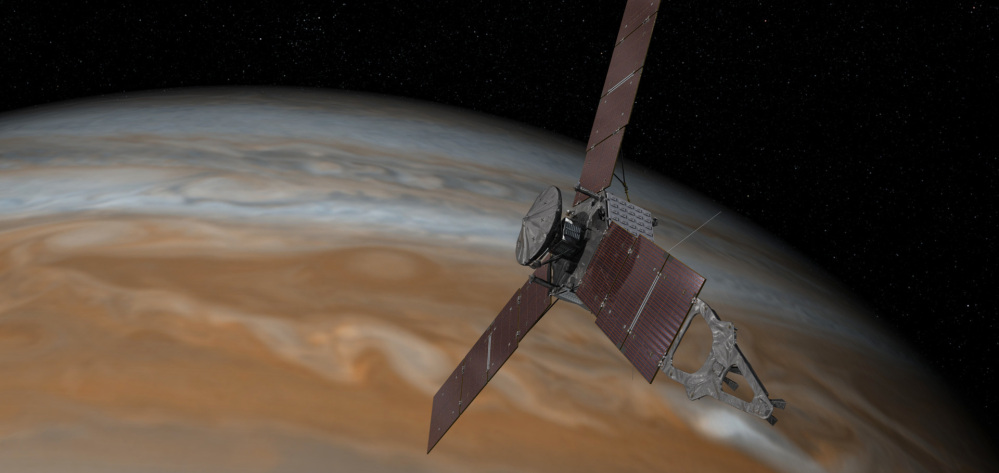LOS ANGELES — A NASA spacecraft is bound for a Fourth of July encounter with Jupiter in the latest quest to study how the largest planet in the solar system formed and evolved.
As Juno approaches Jupiter’s harsh radiation environment, it will fire its main engine to slow down and then slip into orbit around the planet.
“It’s a one-shot deal,” mission chief scientist Scott Bolton from the Southwest Research Institute in San Antonio, Texas, said Thursday. “Everything is riding on it.”
If all goes as planned, Juno will spend nearly a year circling Jupiter’s poles and peering through clouds to scrutinize the planet’s southern and northern lights, which are considered the strongest in the solar system.
“Jupiter is a planet on steroids. Everything about it is extreme,” Bolton said.
Since the 1970s, spacecraft have circled or zipped past Jupiter, sending back stunning views of the planet’s signature Great Red Spot – a long-lived storm – and its numerous moons. The most extensive study came from the Galileo spacecraft, which dropped a probe. Galileo explored Jupiter and its moons for 14 years.
Unlike Earth, which is a rocky planet, Jupiter is a gas giant made up mostly of hydrogen and helium. Scientists still don’t know whether Jupiter has a solid core or how much oxygen and water the planet has – information that could help unravel how Earth and the solar system came to be.
The trip to Jupiter took nearly five years, allowing Juno to loop around the inner solar system and use Earth as a gravitational slingshot to propel itself into deep space.
Previous missions to Jupiter have relied on nuclear power sources because of the distance from the sun. Juno is running on solar power, with panels designed to face the sun during most of the mission.
Send questions/comments to the editors.



Success. Please wait for the page to reload. If the page does not reload within 5 seconds, please refresh the page.
Enter your email and password to access comments.
Hi, to comment on stories you must . This profile is in addition to your subscription and website login.
Already have a commenting profile? .
Invalid username/password.
Please check your email to confirm and complete your registration.
Only subscribers are eligible to post comments. Please subscribe or login first for digital access. Here’s why.
Use the form below to reset your password. When you've submitted your account email, we will send an email with a reset code.